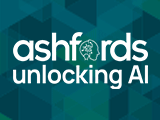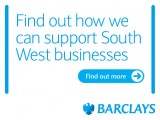This week the government announced the headline-grabbing breakage of a manifesto promise in announcing tax rises to fund reforms of our nation’s health and social care.
April 2022 will see an effective 1.25% increase in National Insurance Contributions (NICs), replaced a year later with a new levy, ring-fenced purely for health and social care costs. 
Workers over State pension age, who are usually exempt from NICs, will also have to pay the extra tax from April 2023. And from April 2022 there will also be an increase of 1.25% on dividend tax.
Technically these increases form a separate levy. However, because it is based on current NIC rules, we have combined the two to demonstrate the increase. All rate rises referred to below are 1.25% unless otherwise specified.
From 2023, this levy will be separately identifiable on payslips and other related documentation. We hope the explanation here is succinct and useful.
For the self-employed
For self-employed individuals, the increase is quite simple. From next April, the rate for profits between £9,568 to £50,270 rises to 10.25%. Profits above £50,270 will be liable to NIC at 3.25% instead of 2%.
The changes affect those with the highest income more, proportionally. At £40,000 profits, the NIC rise is £380.40. Whereas at £80,000 the rise is £880.40 – up to £5,138.18 from £4,257.78.
For employees
The first £9,568 of employee income remains NIC free from next April, but the rate for the next band up to £50,270 rises to 13.25%. Above this limit, the rate rises to 3.25%.
Again, the NIC contribution rises are proportionally the same as for self-employed, with someone earning £40k seeing tax rises to £4,032.24 instead of £3,651.84, and someone on £80,000 paying an extra £880.40, up to £6,359.24.
To start with, this will only apply to those below state pension age, but it will be extended to those over State pension age from April 2023.
For employers
Employers will be hit too, with rates rising to 15.05% by April – a higher cost on employing people.
Some relief for small businesses comes from the Employment Allowance, giving eligible employers a National Insurance reduction by up to £4,000 per year. If their NIC liability for the year remains below £4,000, employers will be unaffected by the new rules. Your accountant can help with eligibility for this allowance, which can easily be overlooked. Do check.
Limited companies receive Corporation Tax relief (currently 19%) on NIC paid as an employer so, after tax, the cost of the increase will only actually be 1.0125%. From April 2023, if the rate of corporation tax applicable to your company is 25%, the additional cost reduces to 0.9375%. The new rates will also apply to Class 1A NIC due on benefits in kind.
Sole traders and partnerships will also receive tax relief on the additional employer contributions they have to pay, as these payments will reduce their taxable profits. The amount of effective saving will depend on your rate of tax.
For owner-managed companies
Company owners who receive a salary of more than £9,568 could be hit with a double whammy by this increase, as they may have to pay both employer’s and employee’s NIC.
It is therefore really important to make sure you revisit your reward strategy, which will include your employment salary and your shareholder dividends. There are many different factors to consider and for many company owners an optimum salary remains £9,568. But there is no one-size-fits-all answer to this question, and so we would encourage you to get in touch and discuss this with us.
Dividends
Dividend tax will also increase from April, by 1.25% to the following rates:
- 8.75% for total income up to £50,270; above this
- 33.75% for total income up to £150,000; and
- 39.35% over £150,000.
So, a company owner with total income below the higher rate threshold of £50,270 (for example, salary £9,568 and dividends of £40,702) will pay an extra £446.25 tax on their dividends, rising to £3,123.75.
Alternatively, someone on the same level of total income but consisting of £20,000 salary and £30,270 dividends would pay an additional £130.40 NIC (plus potentially more employer contributions too), plus an increase in dividend tax of £446.25. This would make them £576.65 per year worse off.
These examples show how important it is to review your reward strategy and to ensure your salary and dividends are set at the optimal levels for your personal situation.
It may therefore be worth considering the timing of dividends to be paid where these are in your control. However, care should be taken to ensure there are no unintended consequences, for example triggering higher rate tax, breaching the threshold for child benefit, or the loss of the personal allowance.
Our key piece of advice is to speak to your usual Haines Watts contact, to make sure that they are aware of your plans for the future and that they can make sure that your tax affairs are optimised.
There is no magic bullet but now is a good time to just check everything is on the right path. For more information, visit: https://www.hwca.com/accountants-bristol/





























